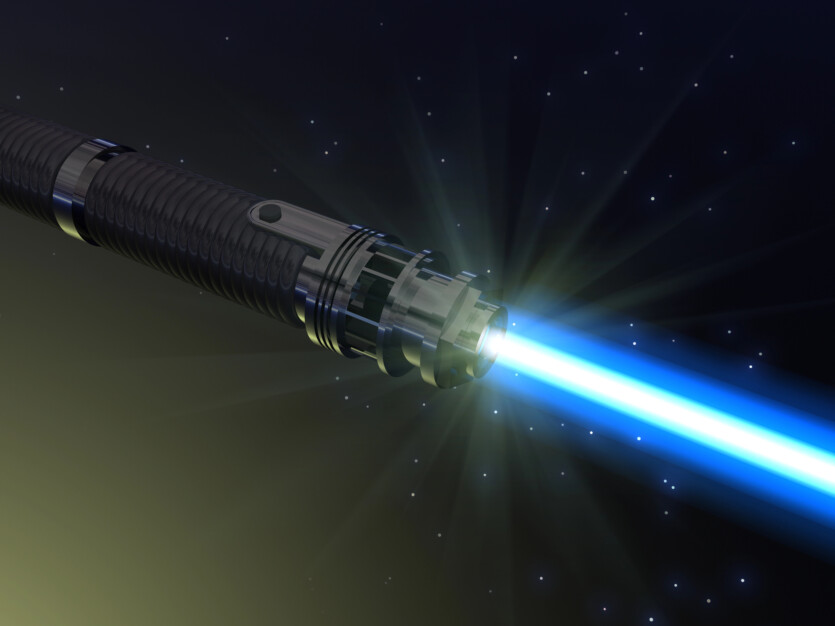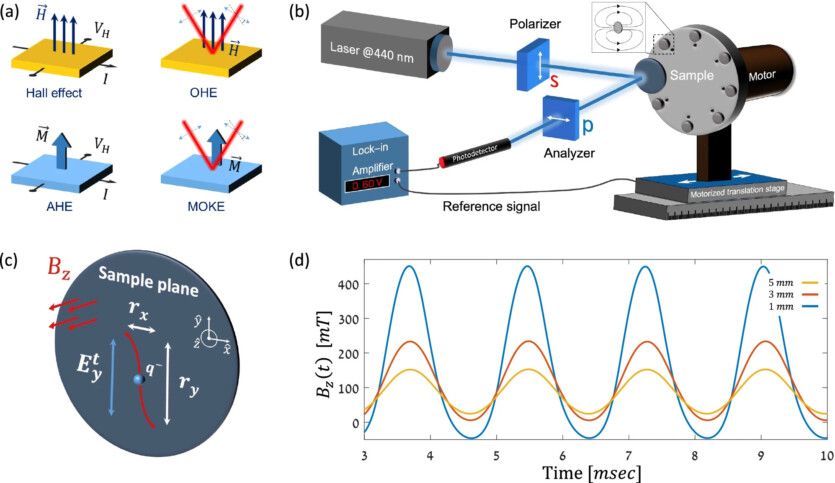
Physicists have known for more than 100 years about strange magnetic signals in metals such as copper and gold, which have no pronounced magnetic properties.
However, these signals could not be detected due to the lack of sufficiently accurate equipment. Using only blue laser and a modified classical method, the researchers were able to detect the Hall effect.
Scientists have long known that electric current is bent by a magnetic field. This phenomenon is called the Hall effect. It is well known for metals such as iron. However, in metals that do not have magnetic properties in the usual sense of the word, such as copper, gold, and aluminum, the Hall effect is much weaker and difficult to observe.
The optical Hall effect was predicted as a way to explain the movement of electrons under the influence of light and magnetic fields. However, for more than a century of theoretical research, this effect could not be detected. Physicists were convinced that it existed, but there were not enough precise instruments to register it.
«It was like trying to hear a whisper in a noisy room for decades. Everyone knew, there was a whisper, but we didn’t have a microphone sensitive enough to hear it», — explains Professor Amir Kapua.
The study, led by doctoral student Nadav Am Shalom and Professor Amir Kapua of the Hebrew University’s Institute of Electrical Engineering and Applied Physics, in collaboration with Professor Binghai Yang of the Weizmann Institute of Science at Penn State University and Professor Igor Rozhansky, aims to detect the smallest magnetic effects in non-magnetic materials.
«You might think that metals like copper and gold are magnetic «quiet» — they don’t stick to the refrigerator like iron. But in fact, under certain conditions, they do respond to magnetic fields, just extremely weakly», — Professor Amir Kapua emphasized.
So far, the problem has been how to detect these small effects, especially using light in the visible spectrum. To solve the problem, researchers have improved a method called the Kerr magneto-optical effect, which uses a laser to measure the effect of a magnetic field on reflected light. This can be compared to using a powerful flashlight to catch the faintest glint on a surface in the dark.
Scientists have combined blue laser with a wavelength of 440 nm with high-amplitude modulation of the external magnetic field, which significantly increased the sensitivity. The researchers were able to detect weak magnetic signals in copper, gold and aluminum, tantalum and platinum.
The Hall effect is a key tool in the semiconductor industry for studying the atomic structure of materials. Using this effect, scientists determine the number of electrons in a metal. Traditionally, however, measuring the Hall effect involves the use of electronic wires connected to a device. The process is time-consuming and difficult, especially when working with nanometer-sized components.

However, the new method involves the use of only a laser and an electrical device, without any wires. Based on the results of an in-depth study, the researchers found that what initially seemed to be random noise in the signal was not random at all.
The phenomenon demonstrated a clear pattern associated with spin-orbit coupling, which links the movement of electrons to their rotation. This connection also affects the dissipation of magnetic energy in materials. These results have direct implications for the development of magnetic memory, spintronic devices, and even quantum systems.
This method offers a non-invasive, highly sensitive tool for studying the magnetism of metals without the use of massive magnets or cryogenic conditions. Its simplicity and accuracy can help engineers design faster processors, more energy-efficient systems, and sensors.
The results of the study were published in the journal Nature Communications
Source: SciTechDaily

Spelling error report
The following text will be sent to our editors: